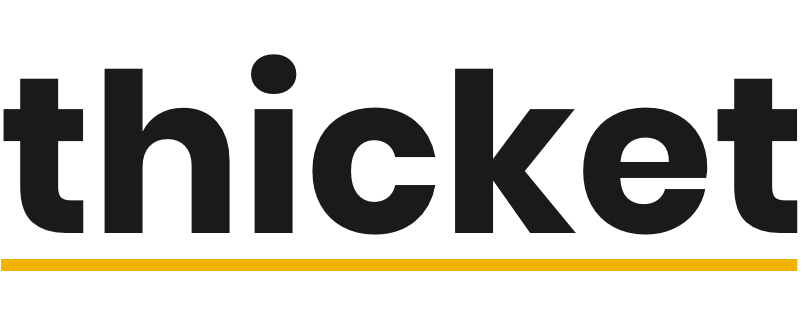SEO For Bloggers
What Is SEO?
Search engine optimization (SEO) is the art and science of organically improving a website’s ranking within relevant search engine results pages (SERPs). Exact methods vary, however, the most successful techniques require specialists to consider three key elements included in search engine algorithms: Context (Keywords), Authority (Links), and Personalization (Social Media). These key elements lead to both on-page and off-page optimization requirements in order to increase your brand’s findability.
Why Is SEO Important?
SEO is plays a pivotal role in your overall online marketing strategy. Without on-page and off-page optimization, your website might as well not exist. Internet users (aka potential customers) are navigating the Internet by means of search engines. Whenever consumers are seeking information regarding a product or service, they simply use keyword inquiries, powered mostly by Google, Yahoo, and Bing, to retrieve their desired answers. Research has shown that the vast majority of clicks occur within the first three results on the first page of results. Therefore, if your site does not appear on the first page of results for relevant search queries, you essentially don’t exist to the potential customer or client.
Things Bloggers Should Do To Optimize Blog Structure
Highlight your best content on home page
Although most blogs are set up to promote the most recent posts on the home page, it is imperative that you consider new readers visiting your site. These new readers would benefit from a tour of your archived posts that help explain your expertise, accolades and philosophy. Think of your home page as a mini portfolio that exhibits your most popular posts, site features, social media profiles, brand identity, and recent posts. Aaron Wall perfectly explains the benefits of adding your most popular posts to your home page: “Featuring your greatest hits puts site visitors one click away from your best content, and places more link equity on the best posts, which makes people more likely to find your site by reading one of your best posts.”
Link to older posts throughout each post
Let’s face it. Spam happens. With the value of content escalating due to its search engine relevance, people are going to try and cheat the system. Meaning, spammy sites are going to “steal” your posts. So why not gain a few new links from this content robbery. By adding internal links to older posts throughout each new post you develop, you can benefit from spam sites stealing your content by an increase in links. This works for syndicated content as well.
Archive effectively
Organize your content in an archive system of categories and date ranges. There are two types of visitors you should consider while constructing an archive- new, sporadic visitors and regular visitors. While optimizing for new sporadic visitors driven through search, be sure to offer each post’s content completely under its respective archived category page. Reversely, offering a link and snippet (similar to SERPs) would appeal to regular visitors.
Host on your own domain
Never, never, never host your blog on any other domain than your primary domain. Meaning, do not use myblog.wordpress.com or myblog.blogger.com. By doing this you are missing out on the opportunity to attract links, attention, publicity, trust and search rankings. Yes, there are several options to host your domain but none of them come close to the benefits of hosting directly on your own domain. I disagree with these other options so much that I will not even provide them in this post. However, if you must know what they are you can find them by reading Rand Fishkin’s SEOmoz article on the increasing blog traffic.
Things Bloggers Should Do To Optimize Text Content
Keywords & anchor text
Keyword research is by far the most effective practice you could implement while developing each blog post. Whether you’re creating the perfect title, content topic, or anchor text, you must use the appropriate keywords and phrases. Utilizing the appropriate keywords increases search traffic, enriches the reader experience, and reveals opportunities for influential posts within your niche. Use sites like Google Trends, del.icio.us, and StumbleUpon to determine the most popular keywords and movements. This will give you precious insight as to what the average Internet user usually searches for as well as how they label terms, products, services, and information within your niche. Speak their language! Once you have determined the best keywords for your post, add them to your content, title, meta tags, alt tags, bold tags, and header tags.
Titles, headers, and sub headers
Choosing the most effective blog post title can be considered an art form. The reason: you must combine commonly used keywords and phrases with a meaningful, attention grabbing headline. As the search engines see it, your H1 or post title is the most telling element to the subject matter of your content. Therefore, they give this element the most weight in relevance. Conduct extensive research on sites like WordTracker and Google AdWords Keyword Tool before deciding on a title. It can be considered good practice to write the title of your post last. Additionally, the headers and sub headers within your post hold sizeable valuable, so be sure to use primary or secondary keywords throughout these facets.
How Video, Images Or Other Media Can Help Optimization Efforts
Search engines now offer blended search results that showcase video and picture files for a particular search query. You can also specify the exact type of media file you would like to search for- videos or pictures. This indicates that search engines are now indexing this type of content and are doing so in accordance to the tags associated with the media files. This significant change in search engine attributes forces SEO to evolve into digital asset optimization. Digital asset optimization is simply providing search engines with suitable meta data on all your videos, pictures, presentations, PDFs, and podcasts. Applying the appropriate keywords in your digital assets’ file name, title, alt tag, caption, product name, and description is imperative. You may not rank very high in a regular Web search for a particular keyword or phrase but you could rank high with little effort for a Video search for the same keyword or phrase.
As an added bonus, Internet users respond very well to media like pictures and videos. If you have a long blog post, providing a video summary could inspire visual learners to pay attention to your post. Providing multimedia files also invites social sharing opportunities, which increases the reach of your content.
Using Social Media To Enhance Blog SEO
To understand why social media is so significant in SEO practices, you have to know what the ranking algorithm consist of. The algorithm is made up of three key elements: Context, Authority, and Personalization. Context refers to the keywords and phrases used throughout your page content. Authority refers to the inbound links from various sites and determines the clout of those links by the popularity of the site from which they come. And Personalization refers to the individual’s social media presence, connections, and activity.
The reason why social media should be an essential part of your SEO efforts is found within the Authority and Personalization elements of the ranking algorithm. By publishing content on all the social sharing sites available, you are naturally increasing inbound links to your site. But that’s not all. Personalized search results are contingent upon who is searching, where they’re searching, and what is happening at that moment. For instance, if you search for football apparel and you are friends with several Denver Broncos fans on Facebook, the SERPs will rank sites containing Broncos apparel more highly. The timing of the search would also greatly alter the results. For instance, if you were to conduct that same search a week before the Super Bowl, your results would likely reflect websites with the apparel of the teams playing for the title.
Essentially, SEO and Social Media are now married. They are inseparable. You cannot be successful at one without the other. Search engines produce real-time Facebook status updates and tweets from Twitter. Therefore, optimizing as many tweets and updates is now important. Reinforcing your brand message through different mediums is always a good idea. People respond more positively or negatively to certain media so try to accommodate your target audience as best as possible. Proving digital assets on social media profiles allows Internet users to interact with you and your brand. It gives them the opportunity to share your content with their friends and family, which inevitably increases brand awareness, links, and traffic.
In order to embrace social media into your SEO practices, consider applying these recommendations:
- Create and optimize multimedia content and promote that content in order to gain more links
- Publish everything, everywhere
- Disseminate as much content as you can, as frequently as you can
- Become a zealous contributor to your online communities
- Assemble substantial communities of relevant and engaged members

